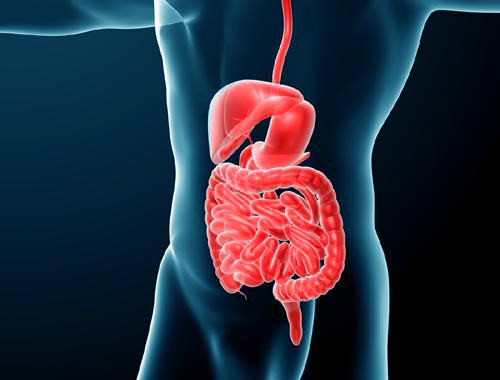Ulcerative Colitis (Inflammatory Bowel Disease, IBD)
Ulcerative colitis is an inflammatory bowel disease (IBD) that causes long-lasting inflammation in part of your digestive tract. Like Crohn's disease, another common IBD, ulcerative colitis can be debilitating and sometimes can lead to life-threatening complications. Because ulcerative colitis is a chronic condition, symptoms usually develop over time, rather than suddenly. Ulcerative colitis usually affects only the innermost lining of your large intestine (colon) and rectum. It occurs only through continuous stretches of your colon, unlike Crohn's disease, which occurs anywhere in the digestive tract and often spreads deeply into the affected tissues. There is no known cure for ulcerative colitis, but therapies are available that may dramatically reduce the signs and symptoms of ulcerative colitis and even bring about a long-term remission. Ulcerative colitis symptoms can vary, depending on the severity of inflammation and where it occurs. For these reasons, doctors often classify ulcerative colitis according to its location. Here are the signs and symptoms that may accompany ulcerative colitis, depending on its classification: Ulcerative proctitis. In this form of ulcerative colitis, inflammation is confined to the area closest to the anus (rectum), and for some people, rectal bleeding may be the only sign of the disease. Others may have rectal pain and a feeling of urgency. This form of ulcerative colitis tends to be the mildest.; Proctosigmoiditis. This form involves the rectum and the lower end of the colon, known as the sigmoid colon. Bloody diarrhea, abdominal cramps and pain, and an inability to move the bowels in spite of the urge to do so (tenesmus) are common problems associated with this form of the disease.; Left-sided colitis. As the name suggests, inflammation extends from the rectum up through the sigmoid and descending colon, which are located in the upper left part of the abdomen. Signs and symptoms include bloody diarrhea, abdominal cramping and pain on the left side, and unintended weight loss.; Pancolitis. Affecting more than the left colon and often the entire colon, pancolitis causes bouts of bloody diarrhea that may be severe, abdominal cramps and pain, fatigue, and significant weight loss.; Fulminant colitis. This rare, life-threatening form of colitis affects the entire colon and causes severe pain, profuse diarrhea and, sometimes, dehydration and shock. People with fulminant colitis are at risk of serious complications, including colon rupture and toxic megacolon, a condition that causes the colon to rapidly expand.; The course of ulcerative colitis varies, with periods of acute illness often alternating with periods of remission. But over time, the severity of the disease usually remains the same. Most people with a milder condition, such as ulcerative proctitis, will not go on to develop more-severe signs and symptoms.
